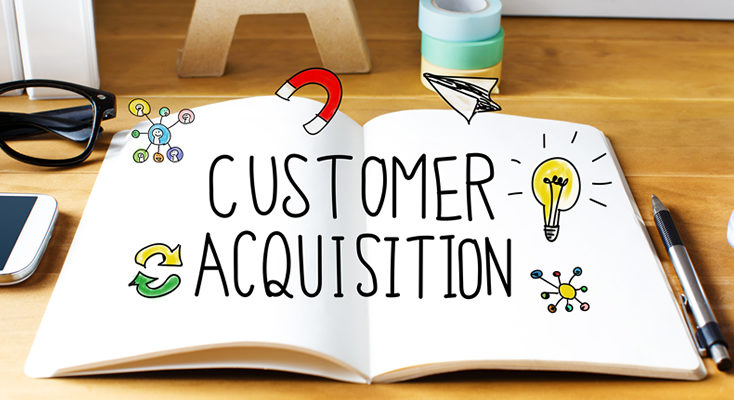With 3,500,000 Boomers turning 65 in 2017, and with most of them becoming eligible for Medicare enrollment around their 65th birthday, marketers are presented with a target-rich market for their AEP campaign strategies. This year’s group of age-ins, however, are distinct from their prior predecessors. In order for health insurers to effectively reach them, they must take the time to understand how this unique group of age-ins differs, and modify their marketing tactics accordingly.
The first major difference to understand is that the majority of new age-ins enrolling in Medicare are coming from Individual, with age-ins making up nearly 40% of the Individual market, according to a 2016 Age-In Study conducted by Deft Research. 95% of age-ins with Individual health plan coverage are planning to enroll into Medicare at age 65, estimated to account for more than 50% of new Medicare sales.
Age-ins with Individual also have a higher propensity to purchase Medicare Advantage and switch to a new insurance provider. According to Deft Research’s 2017 Medicare Age-In study, age-ins with individual and family plans (IFP) are 29% more likely to purchase Medicare Advantage than age-ins with employer-sponsored insurance, and only 24% of age-ins with an IFP plan on enrolling with their current insurers’ Medicare offering.
Another difference is that in having purchased insurance on the Exchange, those coming from individual insurance have been pre-conditioned to an online health plan shopping experience that mirrors that of retail. They are accustom to more transparent pricing and more accessible plan comparison tools. While their past experiences with health insurance are different, so too are the ways in which they expect to be able to interact with a health plan. Boomers are increasingly adopting online shopping and mobile engagement behaviors. The notion that those 65+ prefer in-person and telephone forms of engagement with sales representatives no longer rings true.
Age-ins are evolving and so too must the marketing strategies of Medicare Part C and D. As a healthcare communications company, we work to help plans adapt their pre-sale marketing strategies to these changes. In doing so, we have identified five key strategies MA plans can apply for maximum AEP 2018 member acquisition.
1. Leverage Localization
While localization in current health plan communications typically doesn’t extend beyond a listing of in-network pharmacies or providers located nearest the prospect, health plans should push their localization further to build connection through familiarity. Imagine localized marketing that promotes the positive work of a health plan employee in one’s community, an in-town event the health plan is sponsoring, the accomplishment of an in-network provider, or a service award granted to a local in-network hospital. Familiarity with the name of an insurance company and demonstrated involvement in ones’ local community is almost as important as cost and access to prospects when choosing a plan. Plans that can communicate the positive influence that the company and its providers are making in the community, and their dedication to improving the health of that community, is one of the most effective ways to create trust and generate interest.
2. Accelerate Campaign Execution
On-demand material ordering portals can accelerate the speed of sales rep. follow-up and ensure no lead goes un-nurtured. Ordering portals can integrate a health plans’ complete portfolio of pre-sale materials across product types and offer a menu of tools to support dynamic kitting and customization for individual prospects. Through portal integration with print-on-demand partners and digital output channels, personalized cross-media campaigns can be ordered and fulfilled in minutes. This keeps prospects connected and engaged while demonstrating the level of service they can expect to receive as a member.
3. Optimize Analytics to Drive Actions
Connecting all pre-sale marketing interactions, including direct mail, to a real-time, online campaign reporting system, can deliver the analytics required to identify the messages that most motivate an individual or key segment. It also serves to identify the best channels and times for delivering these messages. Once you understand your data and can predict future buying propensities and preferences, you become empowered to maximize every marketing dollar towards tactics that effectively motivate, acquire and retain your highest lifetime value members.
4. Integrate Self-Service Support Tools
Consumers gravitate toward businesses that let them complete tasks rapidly, with ease and at their own convenience. The plans that will rise above the competition will be the ones that showcase their ability to make complex healthcare decision-making easy, beginning with the plan selection process. Rather than requiring prospects to call customer service or a sales rep to get answers, plans should offer self-service online and at-retail tools, with pre-sale marketing driving prospects to these offerings. From personalized online plan selection tools driven by real-time data entry, to Q&A help desks and pricing comparison tools, integration of applications such as these work to take the confusion out of healthcare and build selection confidence.
5. Optimize Campaign Timing & Segmentation
Often by the time health plans begin sending their largest volumes of direct mailers, the market has been pre-conditioned by what can be found online and mailboxes have been flooded with health plan direct mail. Conclusions will have been reached, and preferences established. Don’t allow your direct mail to arrive in age-ins’ mailboxes too late to be persuasive—April is not too early. You should also segment your campaigns by age groups, especially considering more and more people are enrolling in Medicare at an older age in order to receive maximum social security benefits. Segmentation by level of education, income, plan history, marital status or location are great ways to generate granular-level insights that can improve campaign optimization and understanding of shopping and switching habits across groups.
To gain greater insight into the unique profile of this year’s prospective Medicare Advantage enrollee and strategies to strengthen your pre-AEP marketing programs, email inquires@cierant.com to receive a free copy of our white paper, “Evolving AEP Marketing to the Modern Age-In”.


Comments are off this post